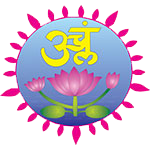
Spiritual Courses
Meditation methods at Achala Ashram are designed to alter the nature of thoughts, fostering a peaceful and contented human being. The meditation technique in Achala Siddhantha has its roots in the Upanishads. There are five meditation Kriyas called Bhavas.
This specialized meditation technique has to be taught by a Guru and the process of initiation is Guru Deeksha which is an integral aspect of Guru Parampara. One who has a strong will and desire to learn meditation is an adikari and he should take on a commitment to lead a moral and socially responsible life. The Guru Deeksha symbolizes the bond between the Guru and Disciple to undertake a spiritual journey together.
Sankhya Bhava
Derived from the Dhyana-Bindu Upanishad, Sankhya Bhava Kriya serves as the foundational initiation program for comprehending our body, mind, intellect, chitta, and ego. This Sadhana plays a crucial role in cleansing the mind, preparing individuals for the inner journey to seek answers to enduring questions that trouble the human mind. Under the guidance of the Achala Guru, disciples undergo initiation and are instructed in this powerful cleansing pranayama, awakening the Kundalini energy.
Hamsa Panchakshari Bhava Kriya
Seekers who have completed the Sankya Bhava Kriya are introduced to the Hamsa Panchakshari Bhava Kriya. Hamsa represents the combination of Prana and Breath, where the mind is a product of Vayu tatva and controlled by prana vayu operating in the chest, influencing the lungs and heart. In this kriya, disciples learn to move prana vayu in a specific way, gaining mastery over mind control. This unique pranayama, combined with two types of Kumbaka, empowers individuals to understand and effectively manage the key power that drives and controls the mind. Graduates of this technique proceed to meditative sadhana.
Tharaka Bhava Kriya
A tranquil mind, free from worries and discomfort, allows for true happiness even in adverse conditions. However, the challenging nature of the mind necessitates training through meditation. Tharaka Bhava Kriya teaches the technique of observing the observer, utilizing unique meditation methods from the Mandala Brahmana Upanishads, also known as Nirguna-Taraka or Amurti-Taraka, performed by the Hamsa. This meditation introduces the experience of bliss to the student, establishing a solid foundation for further spiritual evolution and meditation. Antar-Drishti (internal vision) associated with manas aids Taraka.
Amanaska Bhava or Arya Darpana Bhava
This Trataka technique helps seekers dissipate the Triputi – 'Observer,' 'Observed,' and 'Observing,' reaching a state of Shudha Yeruka and experiencing the Sat Chit Ananda state. Practitioners of Amanaska Bhava see oneness in all beings, qualifying for Achala Paripoorna Bhava.
Achala Paripoorna Bhava
Achala Paripoorna Bhava represents ultimate knowledge beyond understanding, residing in a no-mind state, unattached to anthakaranam experiences. The Yeruka, devoid of its creative power, attains a state of voidness called the BAYALU. With this, the seeker discriminates Nithya and Anithya, realizing the meanings of the Maha Manthra-Traya from the Ananthopanishad. The seeker transcends the boundaries of seeking, concluding the search, and becomes the blessed one.

